Apple variety Arkad
The Arkad apple tree is relatively new and one of the most demanded plants among gardeners. The fruit tree has unique qualities - good winter hardiness, high disease resistance, excellent fruit taste and good yield.
- Varieties
- Biryukova
- Sugar
- Summer yellow
- Pink
- Features of culture
- Advantages and disadvantages
- Yield
- Winter hardiness and disease resistance
- Secrets of Successful Growing
- Timing
- Disembarkation scheme and technique
- Care rules
- Watering
- Loosening the soil
- Top dressing
- Pruning
- Preparation for wintering
- Disease prevention
- Ripening and fruiting
- Gardeners reviews
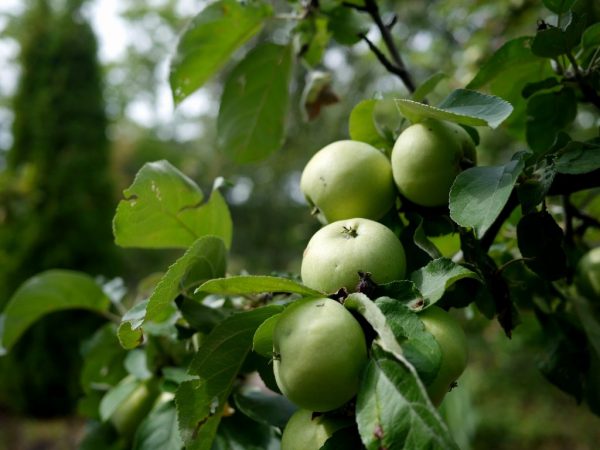
Apple variety Arkad
Varieties
Biryukova
A variety of the Arkad apple tree is the Biryukov variety: according to the description, a plant of medium height - at a mature age reaches 4 m in height, forms a dense, rounded crown.
The advantage is resistance to fierce winters, the disadvantage is weak immunity to fungal infections.
The tree is characterized by increased winter hardiness, flower buds bloom in mid-May, and the fruits ripen in the second or third decade of August.
Biryukov's apples are sweet with a slight sourness, the skin is thin, green in color with a reddish blush and a delicate apple aroma. The size is small - they weigh about 100 g, some larger specimens - 120-130 g. From one adult tree are removed from 8 to 10 kg of fruits.
Sugar
Apple-tree Sugar Arkad is early maturing and fast-growing - it reaches 5-6 m in height.
The variety has an increased resistance to harsh climatic conditions (withstands a decrease to -35 °), therefore it successfully grows and bears fruit in the regions of the Central, Middle and Northern strip.
Fruits of the hybrid form have excellent taste, thin-skinned, green color, sweet and sour taste. The average weight is 160 g. Harvesting takes place in the last decade of July.
Apples of this variety have good keeping quality - within 2 months they do not lose their presentation and taste. The crop tolerates long-distance transportation well.
Summer yellow
Yellow summer Arkad is a relatively new but very popular apple variety due to several unique qualities:
- medium, but stable yields - up to 60 kg of fruits can be removed from one tree;
- apples with a golden color have a sweetish-tart taste;
- high frost resistance - withstands up to -35 °;
- fruits are suitable for fresh consumption and are used for processing.
The disadvantage of the yellow summer variety is that apples quickly deteriorate and do not tolerate transportation well.
Pink
Pink Arkad has a compact form: an apple tree about 3-3.5 m high, forms a spreading, weakly branched crown.
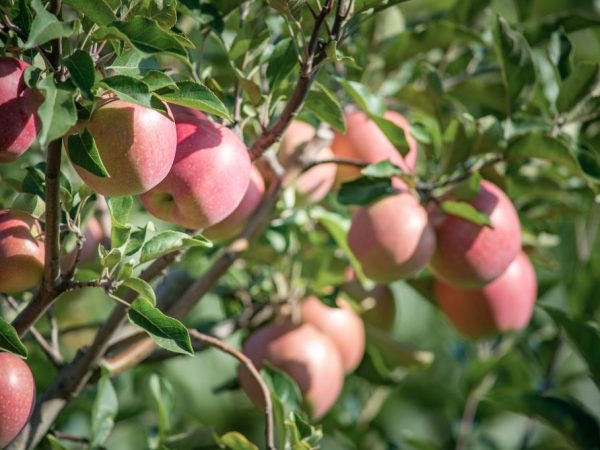
The fruit tastes good
The variety loves to grow on loamy or sandy loam soil, flavored with organic fertilizers.
Fruits are small, round in shape - weigh 60-70 g. The skin is light yellow, covered with thin, longitudinal stripes of raspberry or pink color. The harvest ripens in mid-July.
Features of culture
The apple tree is a medium-sized crop - the optimal height of an adult tree is 4.5, sometimes 5 m.The crown is weakly branched, the shoots are straight. The trunk and stems are covered with a smooth brown bark, do not contain pubescence.
Leaves are green, rounded, pointed at the tips.
In terms of tasting qualities, the fruits received the highest rating. Apples have a sweet and sour taste, juicy, with a delicate aroma. When fully ripe, the fruits acquire a whitish hue.
Advantages and disadvantages
The description of this culture includes several advantages:
- early ripening of the crop - 2-3 years after planting the seedlings;
- annual yield, although not too high;
- drought resistance and good tolerance to sudden temperature changes;
- versatility of the harvest and excellent taste.
Of the shortcomings of the culture, there are frequent lesions with fungal sores - scab and powdery mildew. But with good care and planting rules, the plant gets sick less often.
The second drawback is a short shelf life, so the crop must be quickly applied (eaten or processed).
Yield
All varieties of this crop yield from July to August. It is important not to allow them to overripe, because ripe fruits quickly crumble and deteriorate.
On average, one fruit-bearing tree can produce up to 7 buckets of fruit per season.
The first ovaries of trees begin to form in the 2nd year of planting and every year they increase the amount of harvest. The peak yield falls on the 5-6th year of cultivation.
The plant is self-fertile, although it blooms luxuriantly and annually. When planting with it, you need to plant early flowering plants that act as pollinators.
Winter hardiness and disease resistance
This culture has increased winter hardiness and is able to withstand temperatures as low as -30 °.
Due to this quality, the plant is successfully grown on the territory of the European part of Russia, in the Urals and in Siberia. The highest yield indicators are observed when planting in the southern zone of the country.
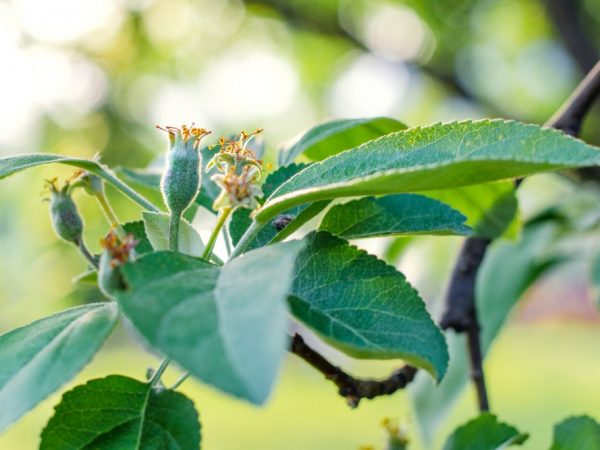
The variety can withstand frosts down to minus 30
The description of this culture includes a weak resistance to fungal infections. Often damaged by spider mites, scale insects, aphids and hawthorn. Often suffers from the invasion of weevils and flower beetles.
Secrets of Successful Growing
The growth, development and fruiting of this tree depends on several factors:
- The quality of the planting material. The seedlings should be 1-2 years old, and it is better to take them from the nursery. Before planting, the root system of plants is soaked in a clay mash. After 2 hours of soaking, the roots are dried and slightly shortened (by 2-3 cm in length).
- For planting, a site is suitable where crops that deplete the soil have not previously grown. The tree should be planted in a sunny place, because in the shade it will grow slowly and bear poor fruit. Choose a calm spot in your garden.
- Loamy soil is suitable for planting, which is harvested in the fall. A bucket of rotted manure, 1 kg of wood ash, 50 g of potassium and superphosphate are applied per m². The soil is dug up, leveled. Some growers apply the nutrient mixture directly to the planting pits a couple of weeks before planting the plants.
Timing
In the southern regions, both spring and autumn planting is allowed. The optimal time in spring is mid or late April, in autumn - the first or last decade of September.
In regions with a cool climate and harsh winters, this procedure is carried out in the spring, as soon as the threat of the last frost has passed. For the entire growing season, the plants will have time to adapt, take root and get stronger for the upcoming wintering.
Disembarkation scheme and technique
For seedlings with a compact crown, holes are dug at a distance of 4 m from each other and 2 m for columnar varieties. The optimum depth is 80 cm, width is 60 cm.
One peg is driven into each hole to support the seedlings. The hole is filled with garden soil by half, then the roots are lowered, straightened, sprinkled with earth.
When planting, it is important that the root collar remains above the soil surface, otherwise the tree will quickly rot and die. The near-trunk zone is well trampled down, the trunk is tied to a support. After planting, the tree is watered with warm, settled water - 3 buckets per tree.
Care rules
Watering
Regular moistening of the soil in the near-stem zone. Watering is carried out as the top layer of the earth dries up and taking into account weather conditions. In dry summers, they water it more often - at least once every two weeks; in the rainy season, the frequency of watering is reduced to avoid rotting of the root system.
Loosening the soil
A day after each watering, the soil is loosened - this procedure allows maintaining good moisture and air permeability of the soil.
Additionally, useful vegetation can be planted on the site - mustard, vetch, green peas. These crops provide good oxygen access to the roots of the tree and protect the garden from parasite infestations.
In order to avoid drying out of the soil and excessive growth of weeds, the tree trunk zone is sprinkled with mulch from peat, last year's manure or garden soil.
For full growth, development and fruiting, the tree needs a balanced diet, consisting of organic and mineral fertilizers. Starting from the age of three, seedlings are fed with nitrogen-containing preparations (nitrophos or ammonium nitrate).
Top dressing
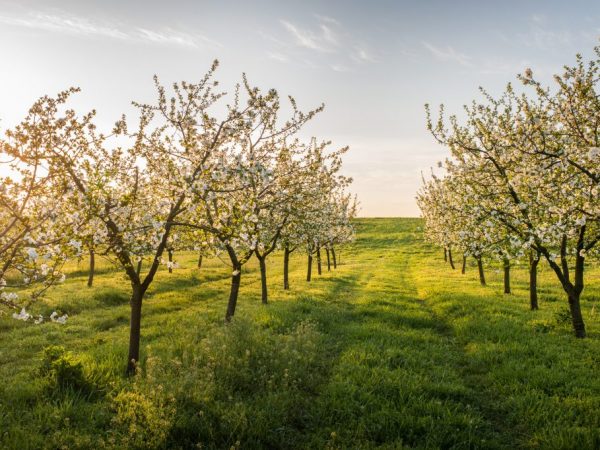
Trees need regular feeding
Nutrition in early spring provides intensive growth of the aboveground and underground parts of the tree.
Before flowering and in the pouring phase of the fruit, the tree is fertilized with potassium nitrate and superphosphate.
The same composition is required for apple trees in late autumn (after leaf fall), which significantly increases immunity from disease and frost. From foliar dressing, gardeners use the drug bud or ovary.
Spraying is carried out at the initial stage of flowering trees, in dry weather, early in the morning or in the evening.
Pruning
According to the description of the Arkad variety, the apple tree must be cut off annually.
This manipulation is carried out every spring and autumn - all broken branches damaged by winds, frosts and diseases are removed. A crown thinning procedure is also required - all branches growing inside the crown are cut into a ring. Places of cuts are treated with copper sulfate and covered with garden var.
To create the correct crown in compact varieties, shaping is necessary - it begins to be carried out immediately after planting the tree. First, the central branch is shortened by 20 cm in length. The next year, the central conductor and lateral branches are pruned - 15 cm in length.
The strongest skeletal shoots are chosen, and the rest are cut into a ring. In the third year, shoots of the second order are formed - 2-3 of the strongest shoots are left, the remaining branches in the row are cut out.
At the 8th year of life, the tree is rejuvenated pruning - all five-year-old shoots are cut out completely, and the young growth is shortened by 1/3 of the length.
Preparation for wintering
All preparatory work is carried out before the onset of the first frost.
- First, the site is cleaned of plant debris, volunteers.
- Then all the damaged branches are cut out on the tree, the places of the cuts are covered with garden pitch.
- Water charging is carried out to increase the winter hardiness of the plant.
- The trunks of the trees are treated with slaked lime, the crown is sprayed with copper sulfate.
- A nutritious composition of superphosphate, potassium salt and nitrophoska is introduced into the near-trunk zone, then mulched with peat, last year's manure or garden soil.
- To protect the tree from rodents, the lower part of the trunk is wrapped with a fine metal mesh, then covered with spruce branches or roofing felt.
Disease prevention
The procedure consists in treating the near-trunk zone and the crown of a tree in early spring and late autumn with copper sulfate or Bordeaux liquid.For parasites, insecticides are used - Actellik, Fundazol, Aktaru or Bazudin.
Spraying is carried out twice and two weeks after the trees have been treated with antifungal drugs.
Ripening and fruiting
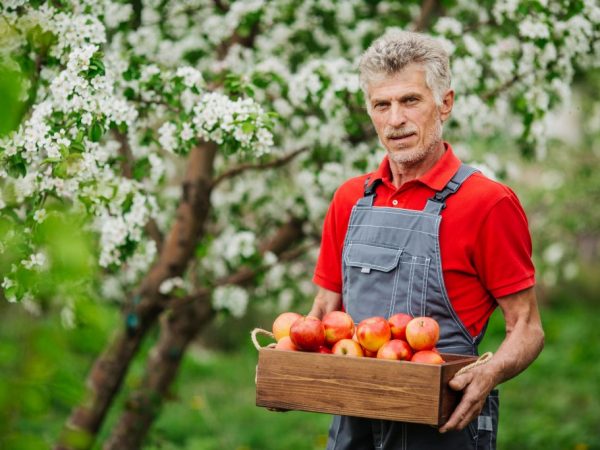
The apple tree will delight you with the harvest in July
Flowering begins in stable heat and occurs in early or mid-May. The fruits ripen together in late July or early August. They are removed by unscrewing them until they begin to crumble.
The first fruits on a columnar tree appear already in the 2nd year of cultivation - a young tree can produce up to 3 kg of juicy and tasty apples. All others begin to bear fruit in the 3rd year of cultivation.
The highest yields are noted on trees five or six years old.
Most of the hybrids of this apple tree yield a crop that is stored for no more than a month. Therefore, apples are immediately allowed for processing to prepare various preparations for the winter. A small amount can be stored in a refrigerator or basement, but the fruit needs to be consumed within a month, because with longer storage, they lose their taste and presentation.
Gardeners reviews
Arkad includes several unique varieties: Biryukova, Sugar, Yellow and Pink. They have good fertility, winter hardiness, unpretentious care and early ripening.
Thanks to these qualities, the tree has received many positive reviews from gardeners in different regions of the country. Observing all the rules of planting and growing, you can easily and successfully grow a tree in your garden and get a tasty and healthy harvest from it.

